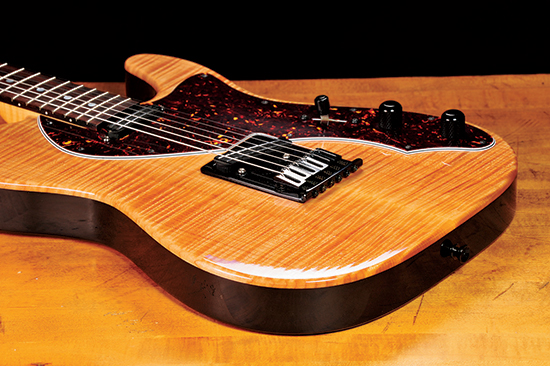
I’ve heard that some of the guitar companies now use a clear finish that’s cured with ultraviolet light. It sounds great: a finish that would stay liquid until it completely levels out, then you turn on the ultraviolet light to cure it. Can you provide any info on this? – Steve Corwin
Michael Dresdner: What you are talking about is not UV (ultraviolet light) curing, but rheology, the study of how liquids resist flow, and there is a liquid that does just what you described. A thixotropic paint will flow for a time after it is applied, then stop and thicken. Most modern latex wall paints are thixotropic, so they dry smooth even when applied with a somewhat textured roller. Though it’s easy to do with thick, pigmented paint, it’s more difficult to formulate thixotropic clear coatings, so they’re less common.
You are right in that some guitar makers are using UV-cured coatings. They are clear, ultra-durable, and each coat cures completely in just a few seconds. But, they are also messy and persnickety, and require a major investment in special equipment, a substantial learning curve, and assiduous equipment maintenance. Thus, they are usually cost-effective only in high volume shops. This is only an example, but the last UV line I set up was designed to finish more than 150 guitars per day, but wasn’t profitable below 50 per day.





